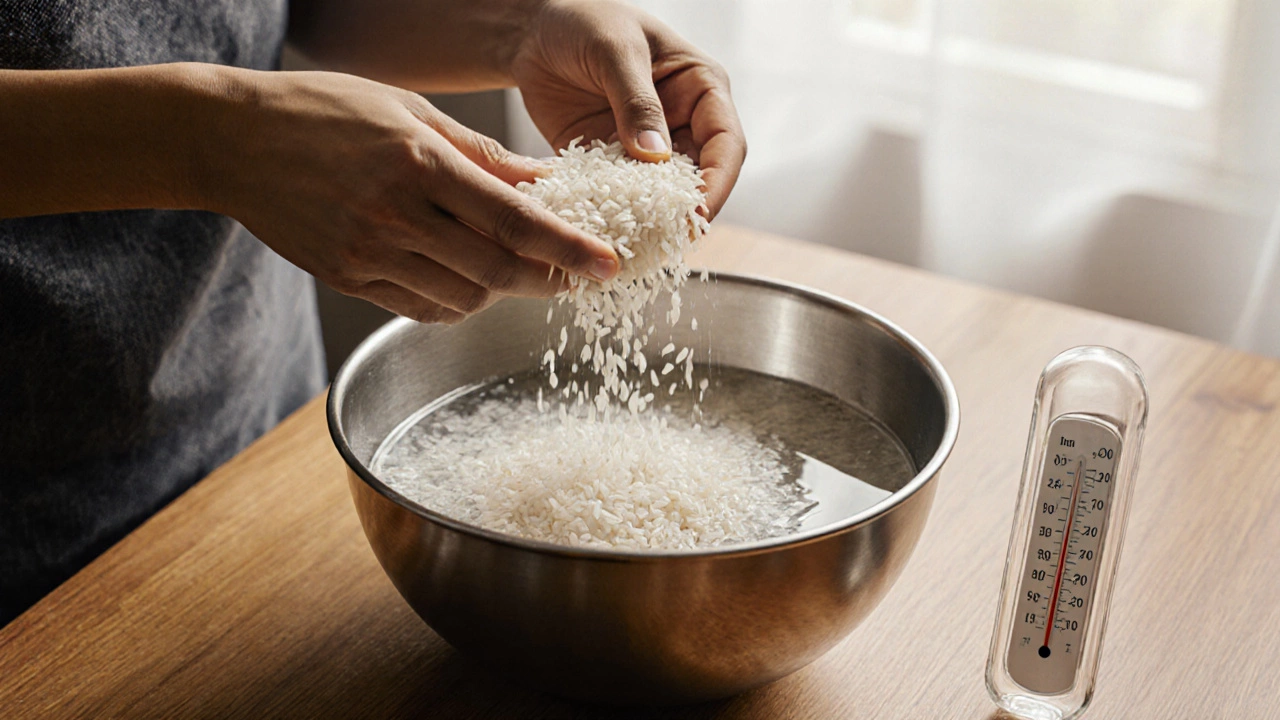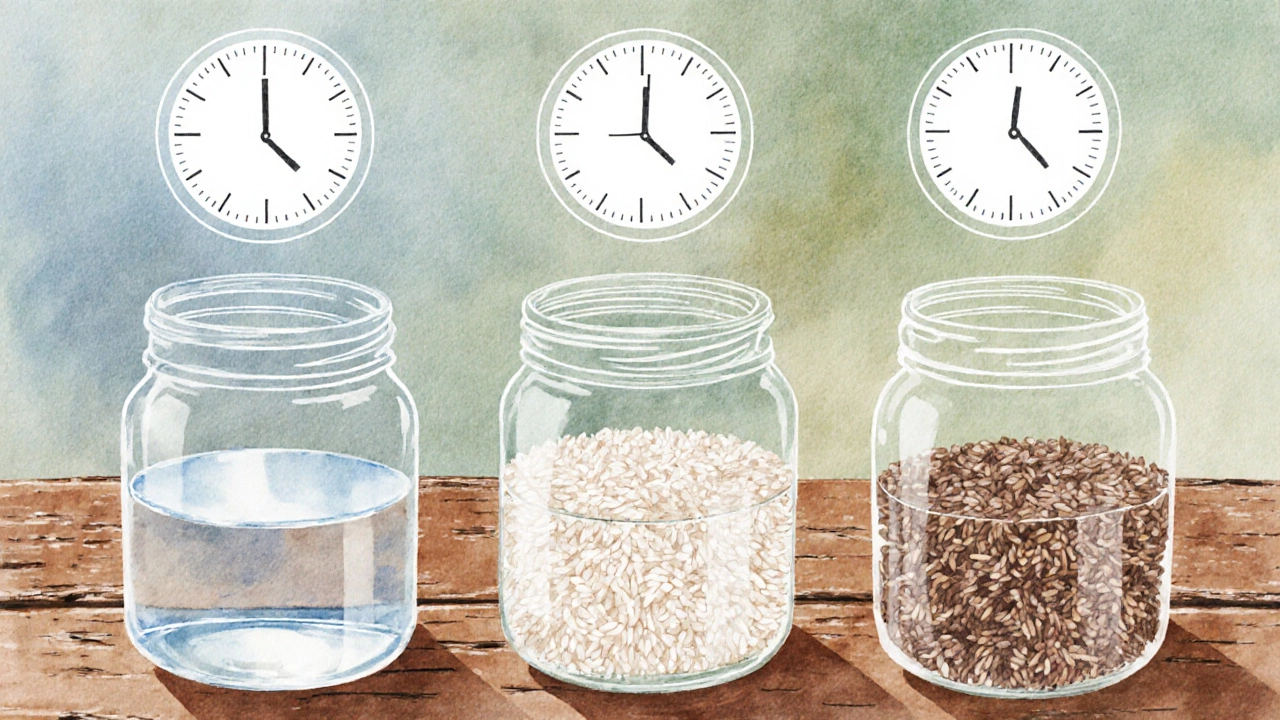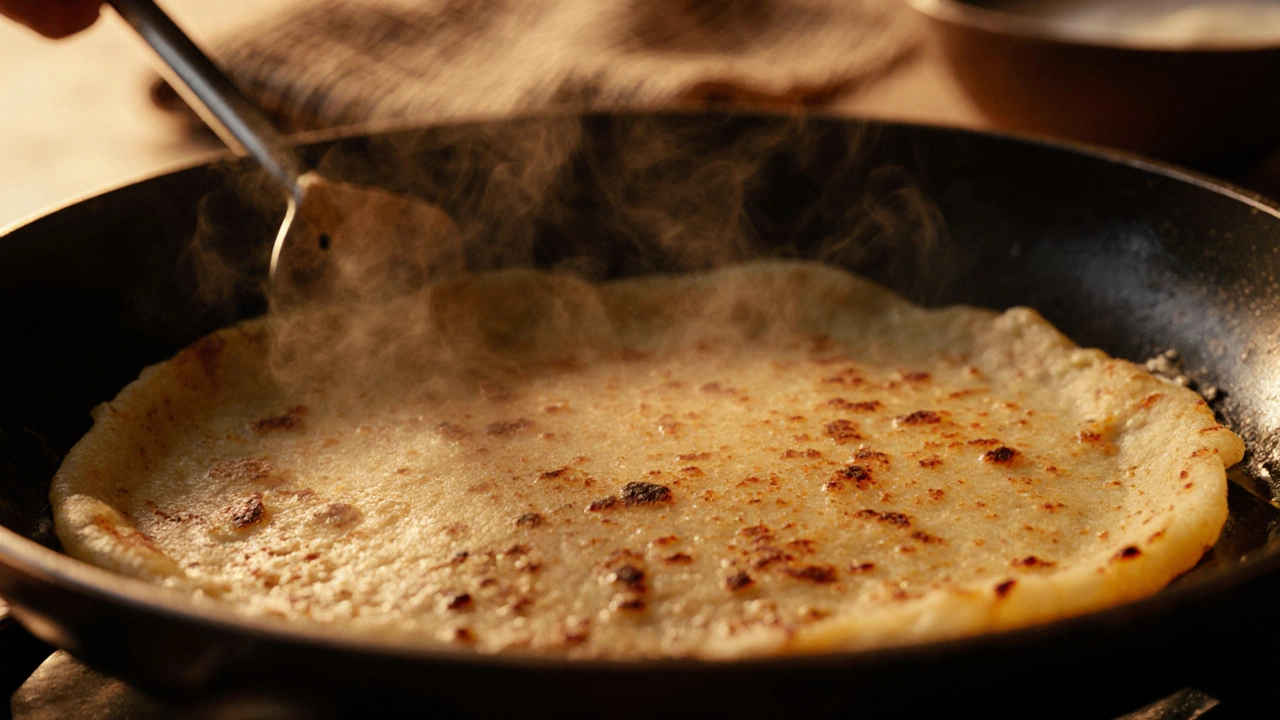Ideal Rice Soaking Time for Perfect Dosa Batter
 Oct, 17 2025
Oct, 17 2025
Dosa Rice Soaking Time Calculator
Adjust the variables below to get your precise soaking time based on the article guidelines. Ideal soaking creates a smooth batter with perfect texture for crisp dosas.
Your Ideal Soaking Time
This is the recommended soaking time for your specific conditions.
Tips for Best Results
Getting a light, airy dosa starts with one simple step: soaking the rice for the right amount of time. Too short and the batter stays gritty; too long and it becomes mushy, making the dosa flat and dense. Below you’ll find the exact soaking window, the factors that can shift it, and a fool‑proof method to get a flawless dosa every time.
Why Soaking Matters
When you soak rice, the hard grains absorb water, swell, and soften. This softening allows the grains to grind into a smooth paste that ferments evenly. A smooth paste creates tiny air pockets during fermentation, which puff up the batter and give dosas their signature crisp‑edge, soft‑inside texture.
What Experts Recommend: Standard Soaking Times
Rice is typically soaked for 4-6 hours at room temperature when making dosa batter. This range works for most medium‑grain varieties such as parboiled rice (idli rice) or regular short‑grain rice. The extra two‑hour buffer accommodates slight temperature variations in an Indian kitchen.
| Rice Type | Typical Soak (Room Temp) | Notes |
|---|---|---|
| Idli Rice (Parboiled) | 4-5hours | Firm grains, ideal for crisp dosas |
| Short‑grain White Rice | 5-6hours | Swells more, may need extra grinding time |
| Brown Rice (Blended) | 6-8hours | Higher fiber; longer soak improves grindability |
| Whole‑grain Millet Blend | 8-10hours | Very hard; pre‑soak helps fermentation |
Factors That Shift the Soaking Window
Even with a solid baseline, several real‑world factors can push the ideal soak forward or backward. Keep an eye on these variables:
- Ambient temperature: In a hot Mumbai kitchen (30‑35°C), grains hydrate faster. Cut the soak by about 30minutes.
- Water hardness: Hard water slows absorption. If your tap water feels “chalky,” add a pinch of baking soda or use filtered water and extend the soak by an hour.
- Rice variety: Parboiled rice has a pre‑cooked coating that slows water penetration, while raw short‑grain takes longer.
- Quantity: Soaking a large batch (2kg+) may need a longer period for the inner grains to catch up.

Step‑by‑Step Soaking Guide
- Measure the rice. For a standard batch, use 2cups of Dosa rice (idli rice works best).
- Rinse the rice under running water until the water runs clear. This removes surface starch that could make the batter gummy.
- Place the rinsed rice in a large bowl and cover with fresh, room‑temperature water. Use about 3times the volume of rice.
- Set a timer for 4hours. If the kitchen is warm, reduce to 3.5hours. If you’re using a cooler environment (below 20°C), aim for 5hours.
- After the timer, check the texture. Press a few grains between your fingers - they should feel soft but still retain a slight bite. If they’re still hard, give them another 15-30minutes.
Grinding and Fermentation: The Next Crucial Steps
Once the rice is soaked, drain it and combine it with soaked Urad dal (split black gram) and a small amount of Fenugreek seeds. Blend until you get a smooth batter, then let it ferment for 8-12hours (or overnight) in a warm spot. The quality of the soak directly impacts how quickly the microbes can work, so a correct soak leads to a shorter, more reliable fermentation.
Adjusting Batter Consistency After Soaking
If you find the batter too thick after grinding, add lukewarm water a tablespoon at a time. The goal is a pourable consistency that spreads thinly on a hot pan. The soaking time you chose should already have given you a soft grain base, so you’ll rarely need more than ½cup of water for a 2‑cup rice batch.

Common Mistakes & How to Fix Them
- Soaking for less than 3hours: The batter stays gritty. Fix: Re‑soak the rice for an additional 2hours, then grind again.
- Over‑soaking (12+hours): Grains turn mushy, leading to a batter that ferments unevenly. Fix: Discard the mushy portion, add fresh rice, and restart the soak.
- Using cold water: Slows absorption significantly. Fix: Use room‑temperature water or warm it slightly (no more than 40°C).
- Skipping the rinse: Excess starch creates a gummy batter that sticks to the pan. Fix: Rinse thoroughly before soaking.
Quick Reference Checklist
- Rinse rice until water is clear.
- Soak at room temperature for 4-6hours (adjust for temperature).
- Check softness by pressing grains.
- Drain and grind with urad dal and fenugreek.
- Ferment 8-12hours in a warm spot.
- Adjust water to achieve pourable consistency.
Frequently Asked Questions
Can I soak the rice overnight?
Yes, but keep the bowl covered with a clean cloth and store it in a cool spot (under the pantry). Overnight soaking (8-10hours) works well in cooler climates, but be ready to discard excess water that may accumulate.
What if I only have brown rice?
Brown rice needs a longer soak-about 6-8hours-and a more powerful grinder. Mix it with a small portion of regular rice to keep the batter light.
Is warm water better than room temperature?
Warm water (around 35°C) can shave 30minutes off the soak, but never exceed 40°C as it starts cooking the rice, affecting texture.
My dosa batter is too sour after fermentation-what went wrong?
Over‑soaking creates a mushy base that ferments faster, producing excess acidity. Stick to the 4-6hour window and keep the fermenting area at 30‑35°C.
Can I reuse the soaking water for the batter?
It’s best to discard it. The water contains starch that can make the batter gummy and promote uneven fermentation.
Mastering the soak is the foundation of a great dosa. Follow the timings, adjust for your kitchen, and you’ll consistently serve golden, crispy dosas that everyone loves.